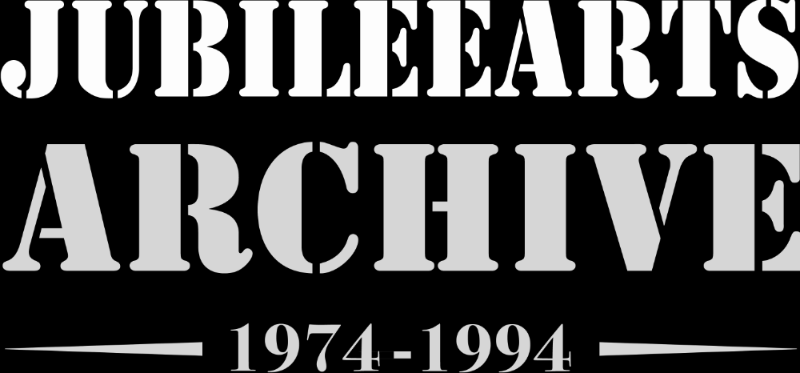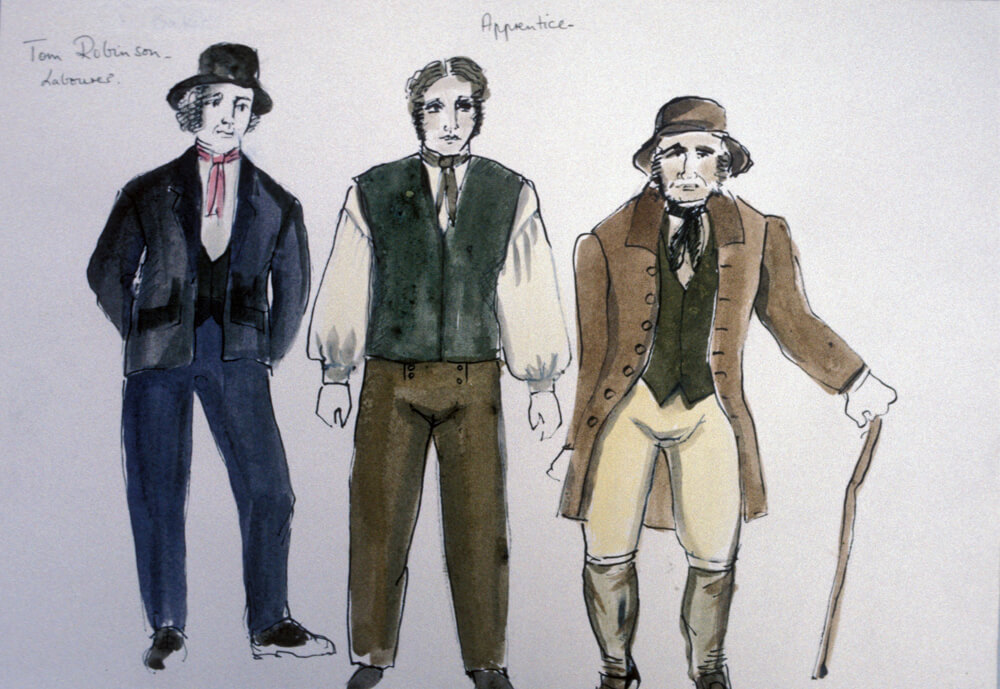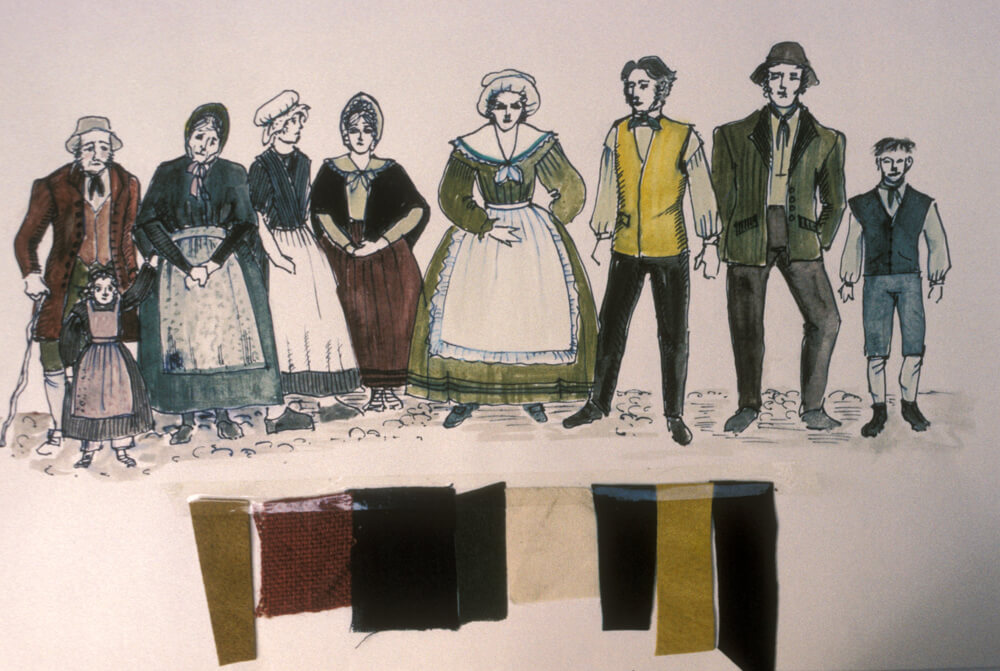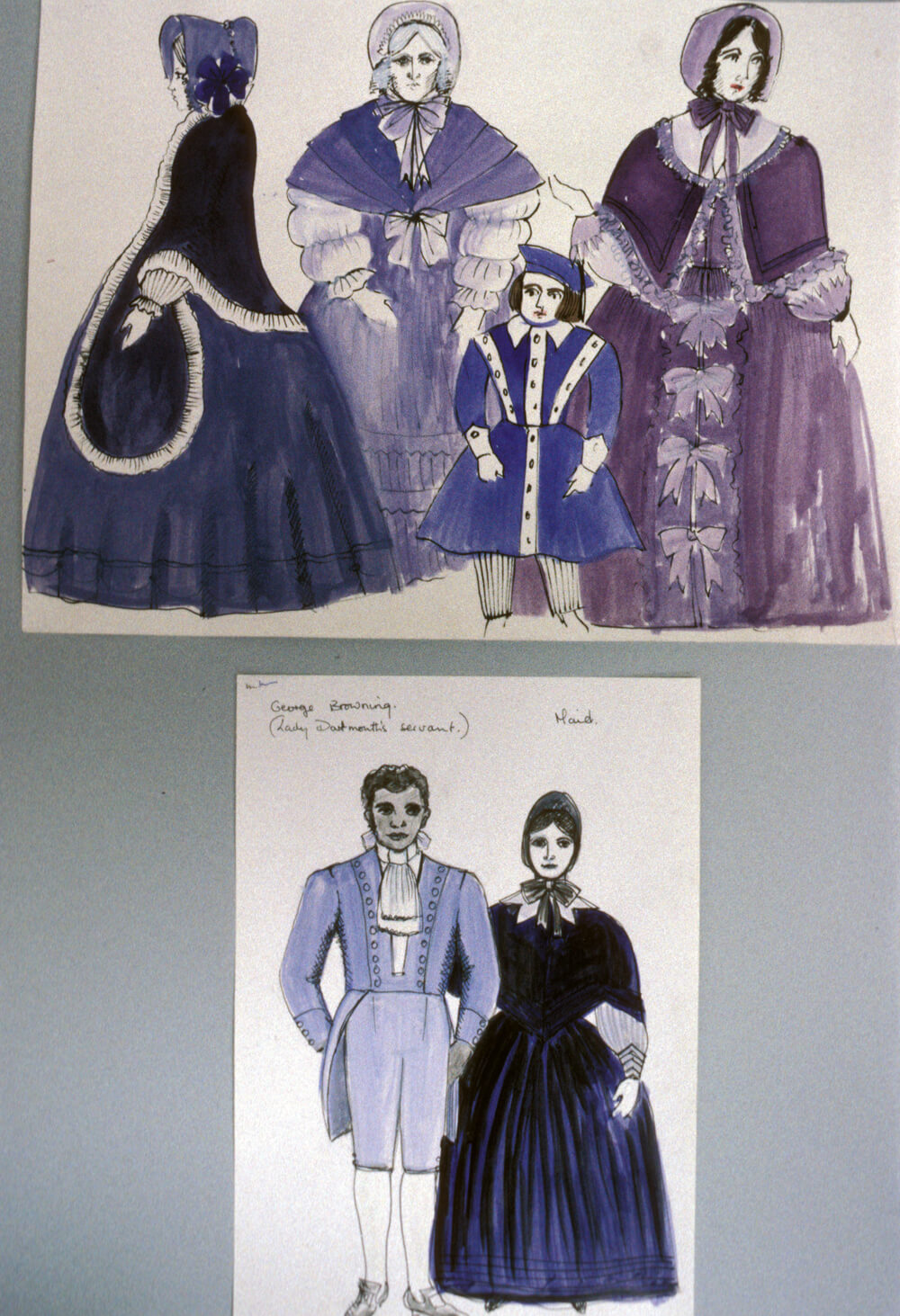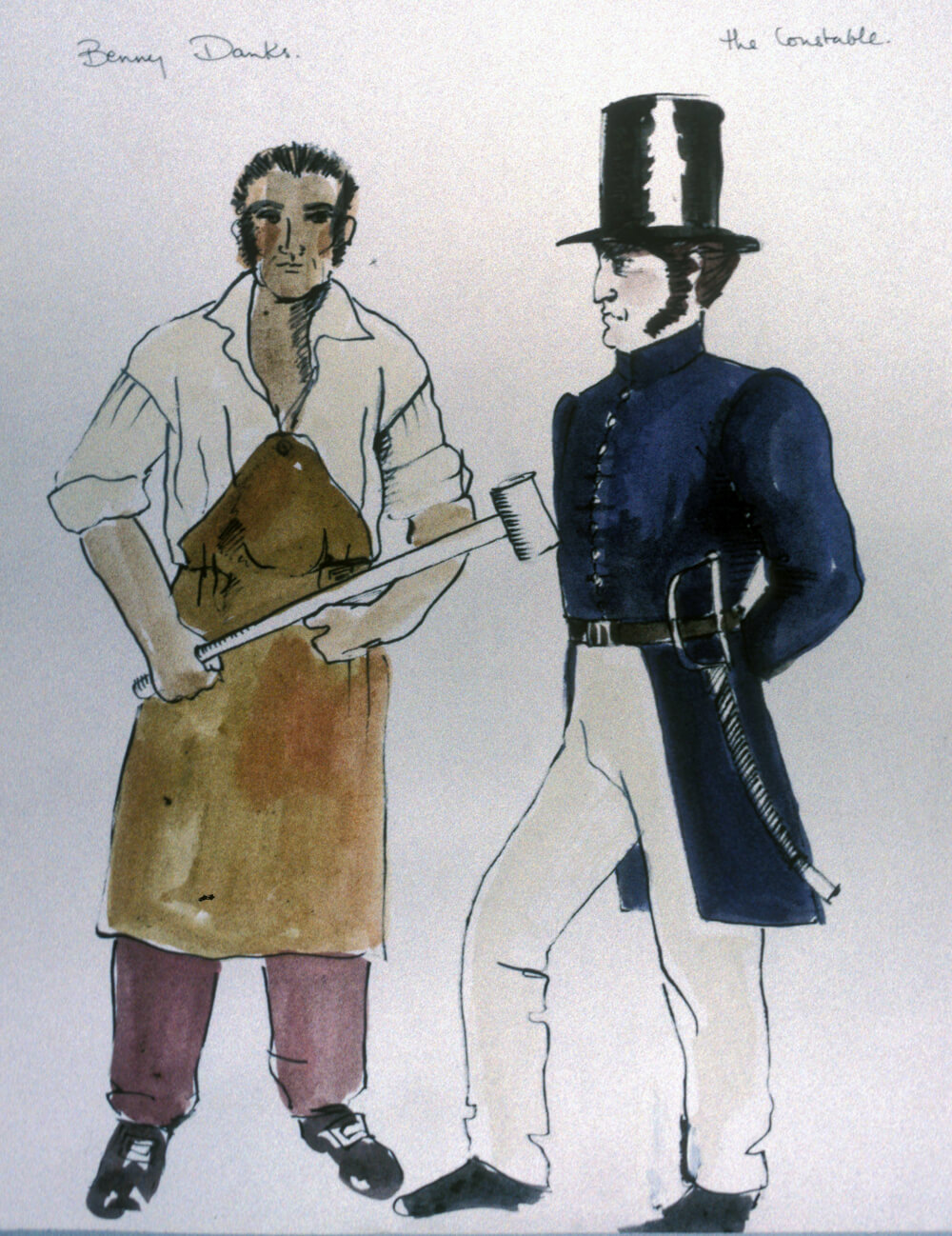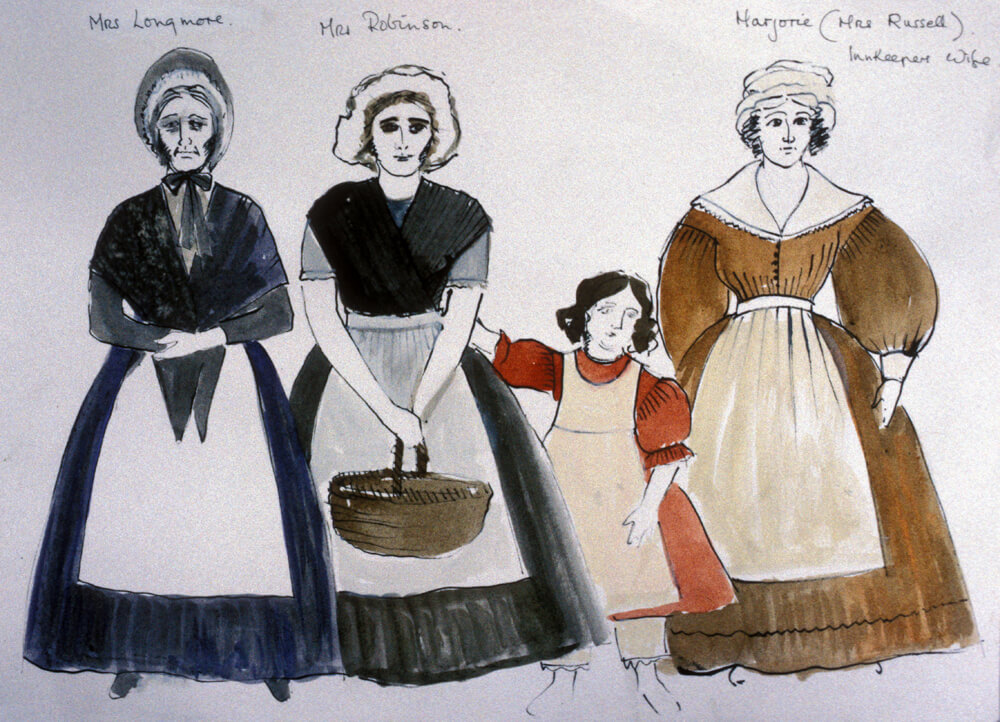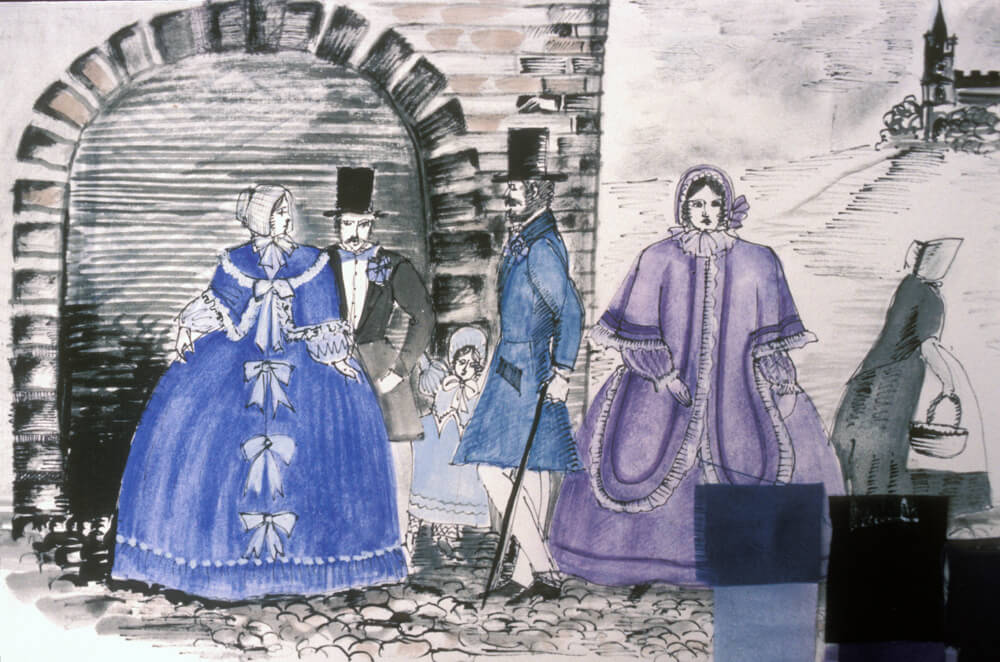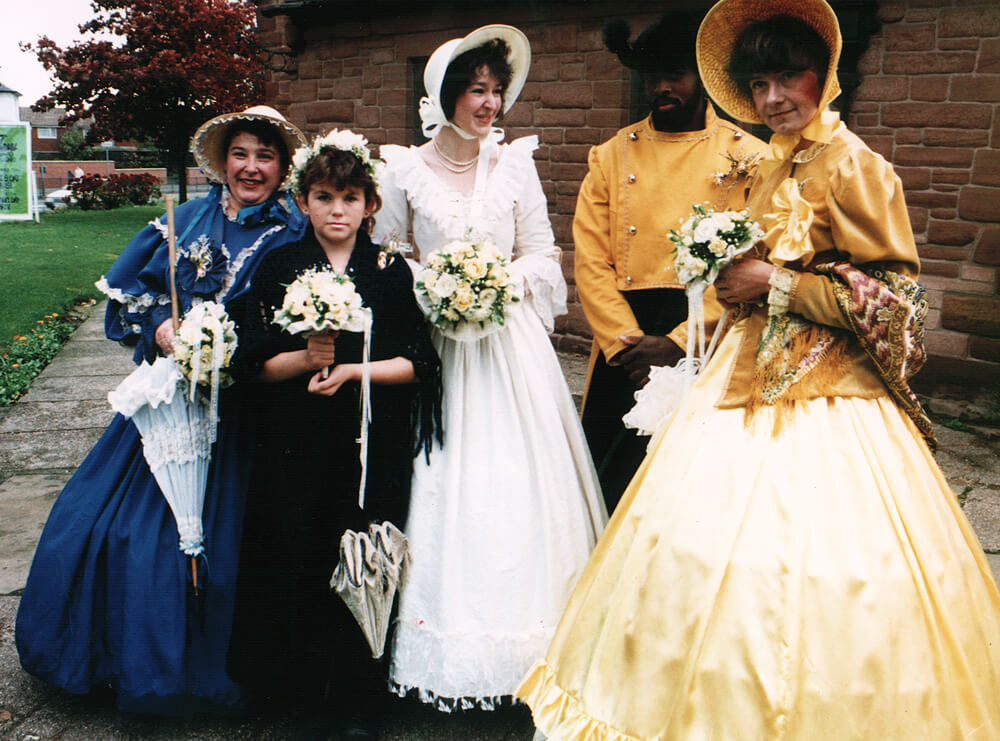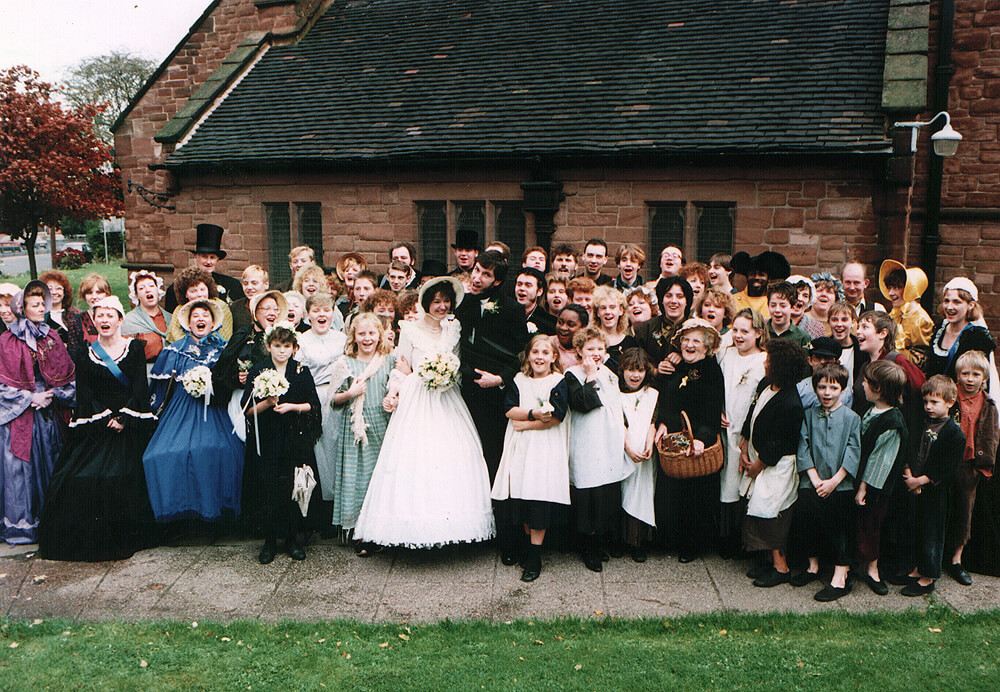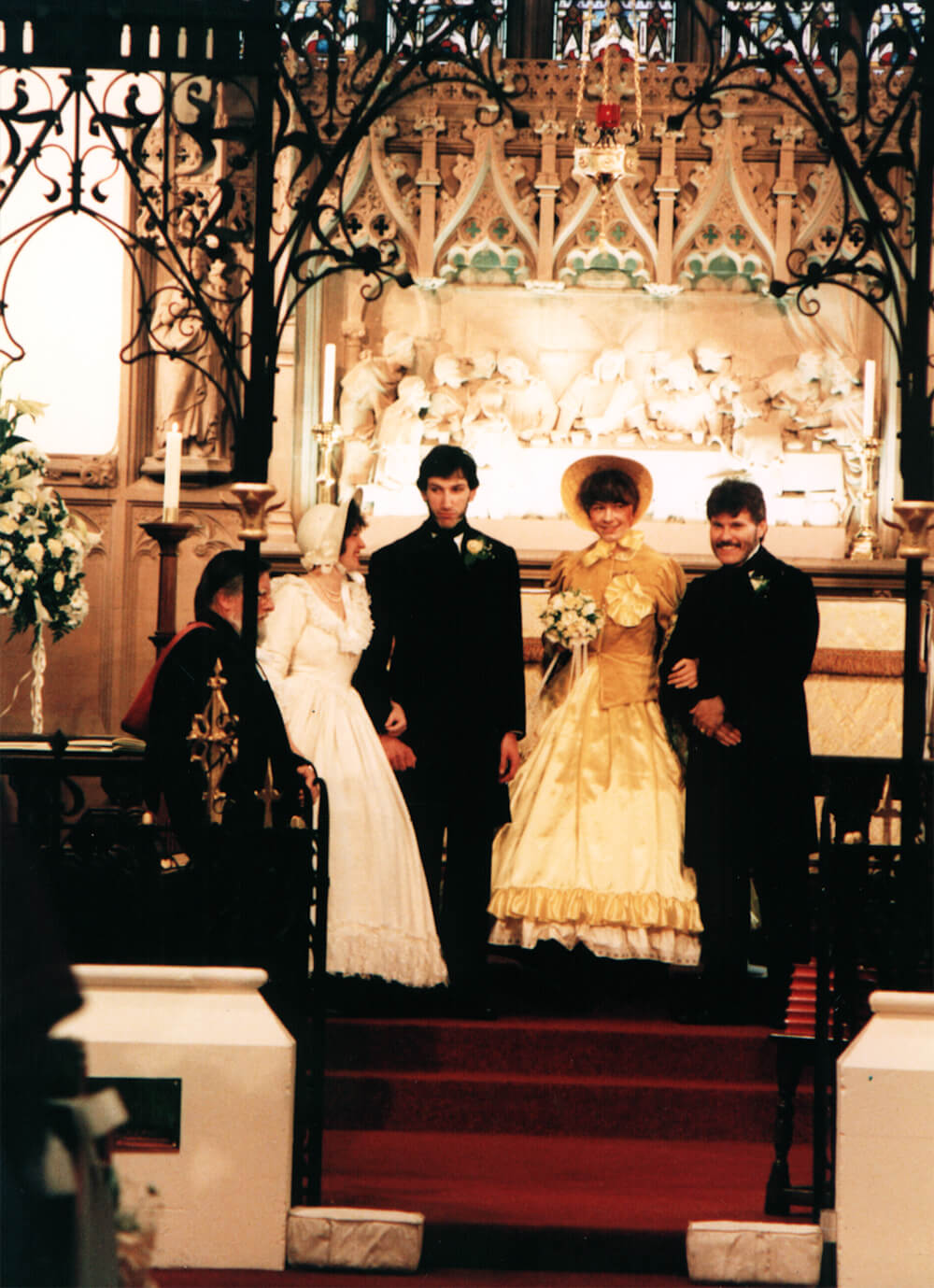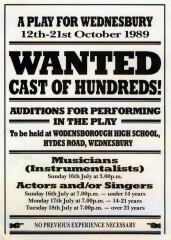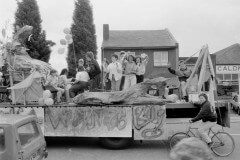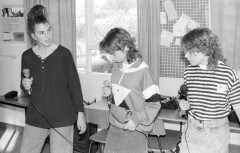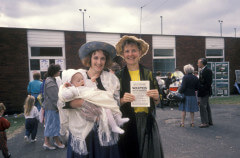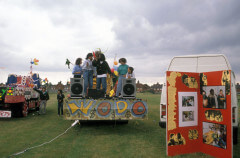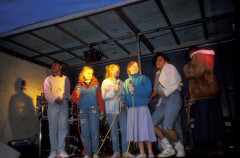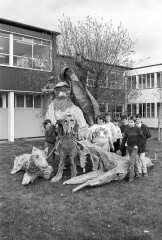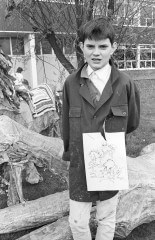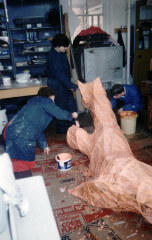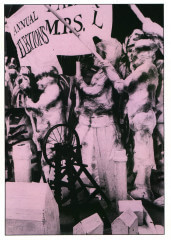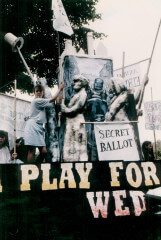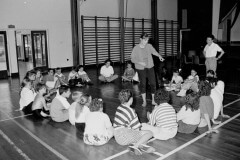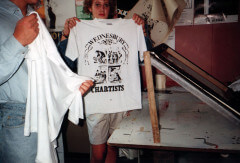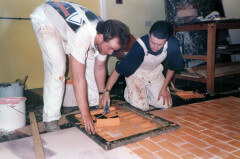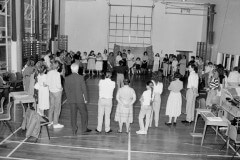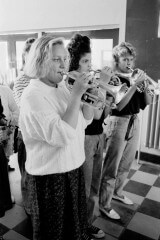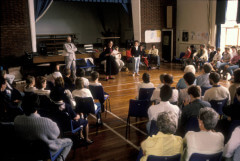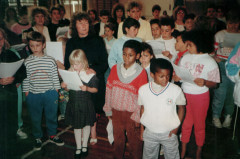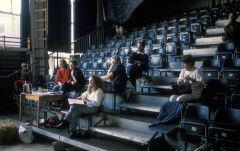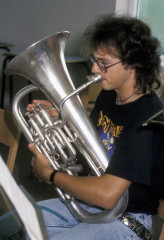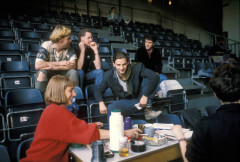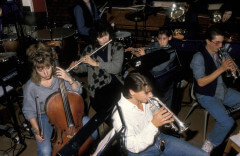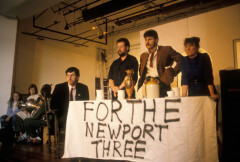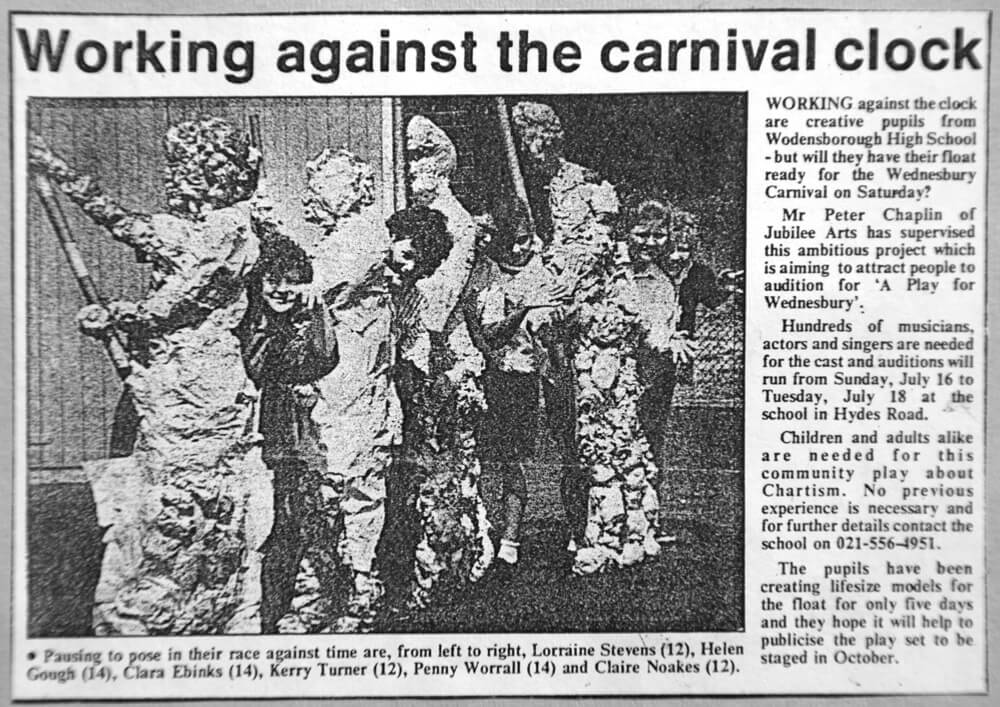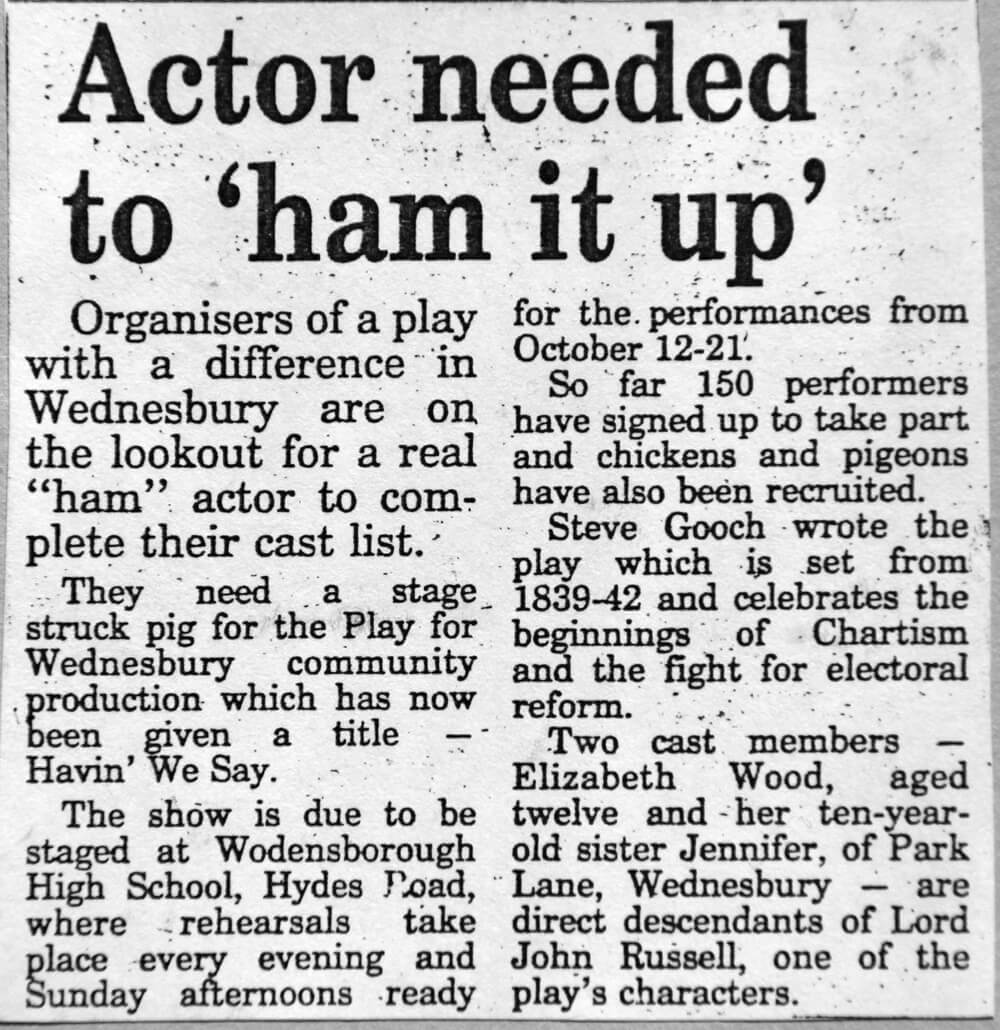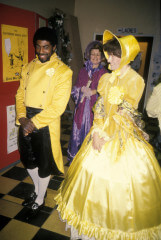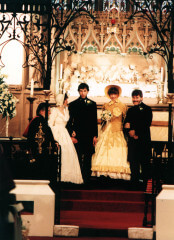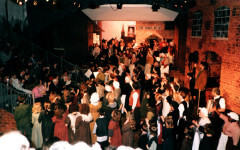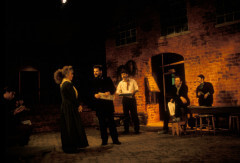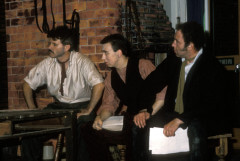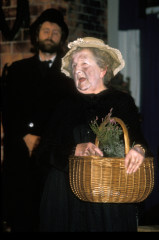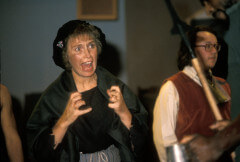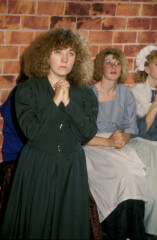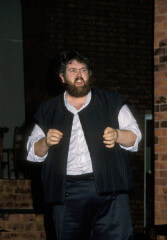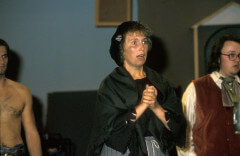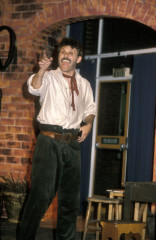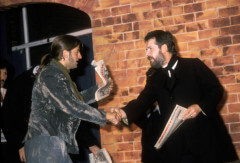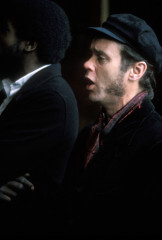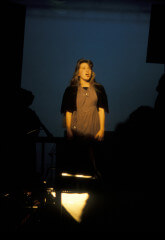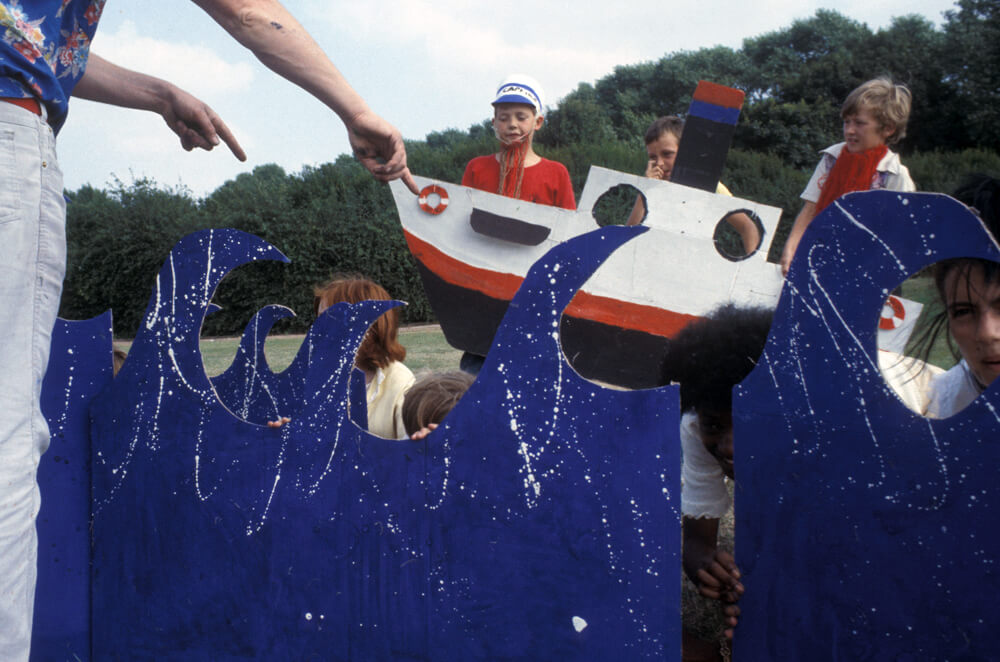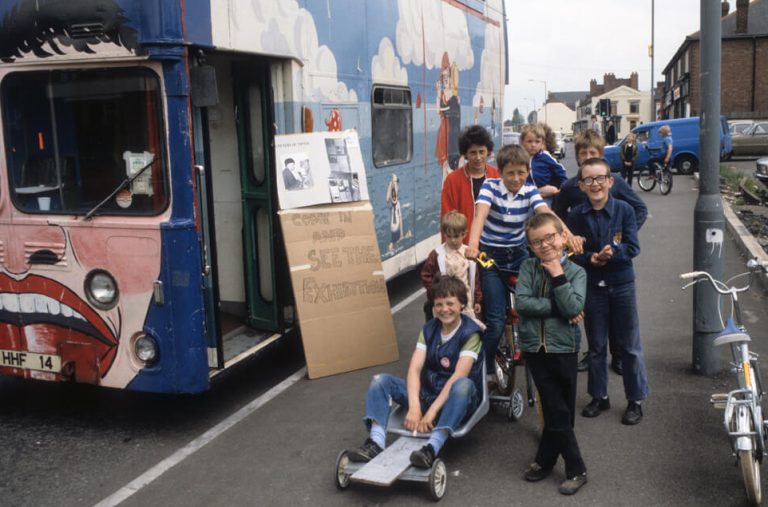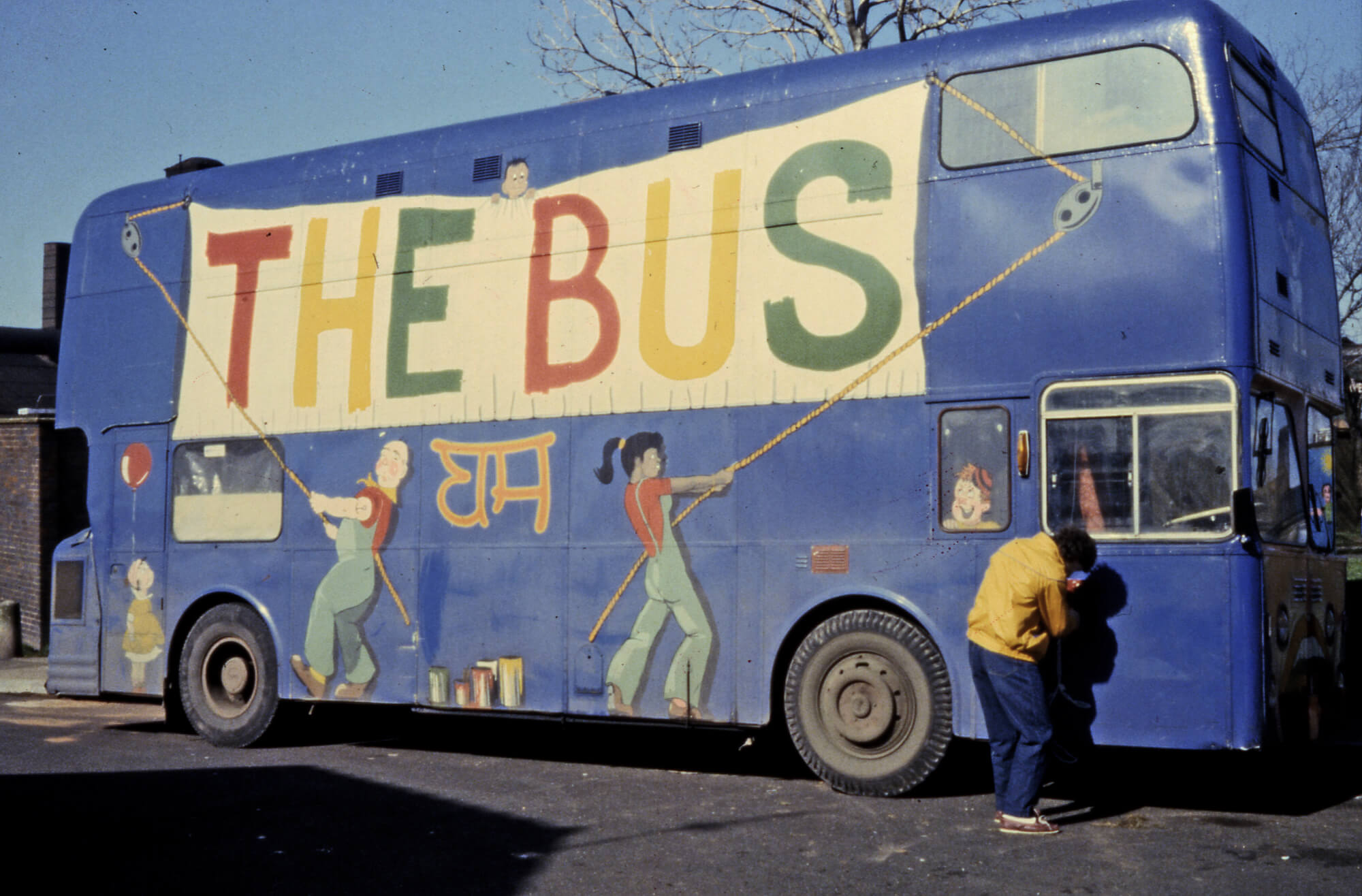Community plays are a unique form of theatre, which involve hundreds of local people acting, singing, playing music, as well as getting involved in all the other backstage jobs such as creating sets and costumes, prop building, lighting and technical assistance, publicity and stage management. Community plays are created by local groups and individuals working in partnership with a highly experienced team of theatre and arts workers. This form of theatre was pioneered by Ann Jellicoe, a playwright, theatre director and actress who set up the Colway Theatre Trust in 1978 to develop this genre. In October 1989, following nine months of preparation, backed up by the technical expertise of Theatre Foundry and Jubilee, there were ten sell out performances of ‘Havin’ We Say’ by 150 performers from the local community to an audience of over 3000 people. The school orchestra provided a core of the live musicians, supplemented by other players.
The Wednesbury play was written by Steve Gooch, based on research collected locally. It was directed by Sylvia King from Jubilee and Kate Organ from Theatre Foundry. (Kate was one of the original members of Jubilee.) The main setting was the most crucial period in the town’s history – the early 19th century. In the 1830’s there was very little representation of ordinary people’s views in the Parliament at Westminster. Only a very small percentage of people were entitled to vote. These were hungry years, filled with unrest and great poverty. The Chartist organisation was founded in 1833 to fight for electoral and social reform. Over half a million signatures were collected for their National Petition or ‘Charter’. Chartists were considered to be dangerous revolutionaries by the government of the day and suppressed. In the end, almost all the aims of the ‘Charter’ were achieved but there were many dramas and conflicts before this happened. In 1839, somewhere between 1,000 and 5,000 Chartist sympathisers marched on the town of Newport in Monmouthshire, armed and with intent to liberate prisoners. Troops opened fire and shot dead 22. The leaders of the rebellion were convicted of high reason and transported for life. This was the background to the play.

A Chartist Hymn
Britannia’s sons, though slaves ye be,
God, your Creator, made you free;
He life and thought and being gave,
But never, never made a slave!
The verdant earth on which we tread.
Was by His hands all carpeted;
Enough for all he freely gave,
But never, never made a slave.
All men are equal in his sight,
The bound, the free, the black, the white;
He made them all – them freedom gave,
God made the man – man made the slave.
– John Henry Bramwich,
The Northern Star and Trades Journal,
4th April, 1846
In 1839, there was a mass meeting of 4000 people in Wednesbury Market Place in support of Chartist demands, and a delegate was elected to the ‘National Convention of Industrious Classes’ to represent the area. Wednesbury’s population at that time was greater than that of Birmingham.
The play covered a period of four years from 1838 to the building of the People’s Hall in Russell Street in 1842. They were one of only a few towns to build such a facility. As Benny Danks, the lead character in the play, portrayed by youth worker John Parkes, proclaims: “We talk and listen to each other, look the other man in the eye, have our say and let him have his… In this hall, the old will pass on their wisdom to the young and the young will be allowed to answer back – for once. For now, this is our parliament.”
Some of the action was set in The Turks Head, a ‘spit and sawdust’ pub, the original building still existing. A local historical expert, Edward Chitham, undertook extensive research to provide raw material for the play.
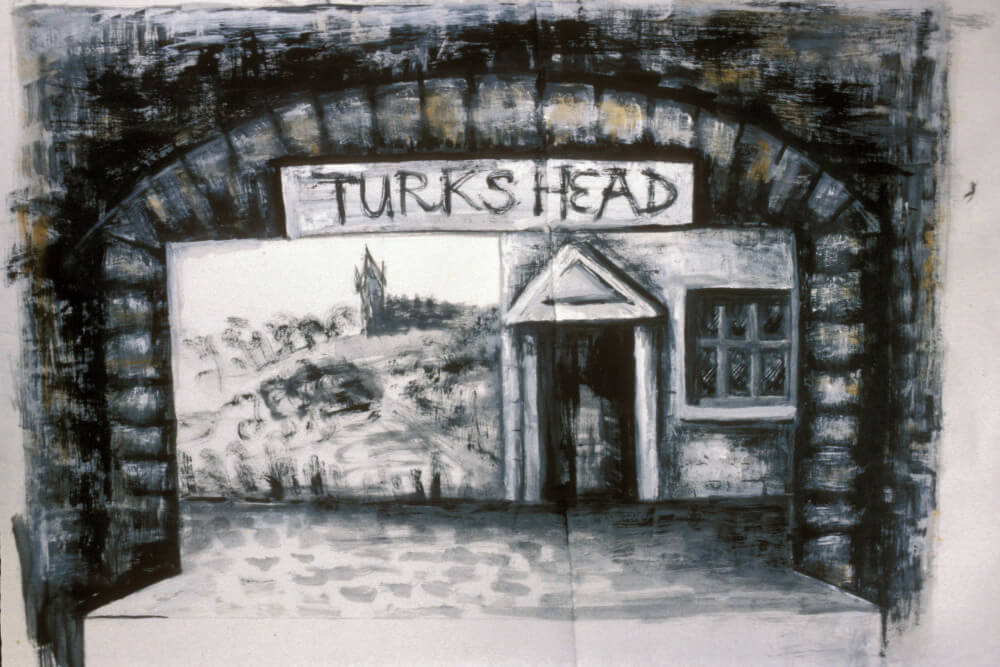

With the directors on board in April, a range of workshops were undertaken prior to the production period other than at the school – at Manor Centre, Glenvale Special School and Harvills Community association – who all constructed parts of a sculpture ‘Old Woden’, which was on display at Wednesbury Art Gallery and used at a number of carnivals and events. In May, a youth arts drama weekend was held at the school to test out ideas and promote the concept, where forty young people worked with a musician and two drama directors to create an original 30 minute piece in three days flat, performing it on the sunday night to parents and friends. In June ‘taster’ workshops were held to recruit a cast, as the first draft of the play arrived in June.
Music work with local youth resulted in a rap, performed at Wednesbury carnival in July as a prelude to the play, as well as other end of term school events in the town. A special carnival float was built by local youth to promote the play and also toured locally. At Wednesbury carnival it was awarded second prize by the Rotary Club, winning £50. Auditions were held in July and a core cast of 100 people appointed – this grew over the coming months. In August, the final draft of the play was agreed, then the set and costume designs were agreed and the first rehearsals of the band undertaken over an intensive week.
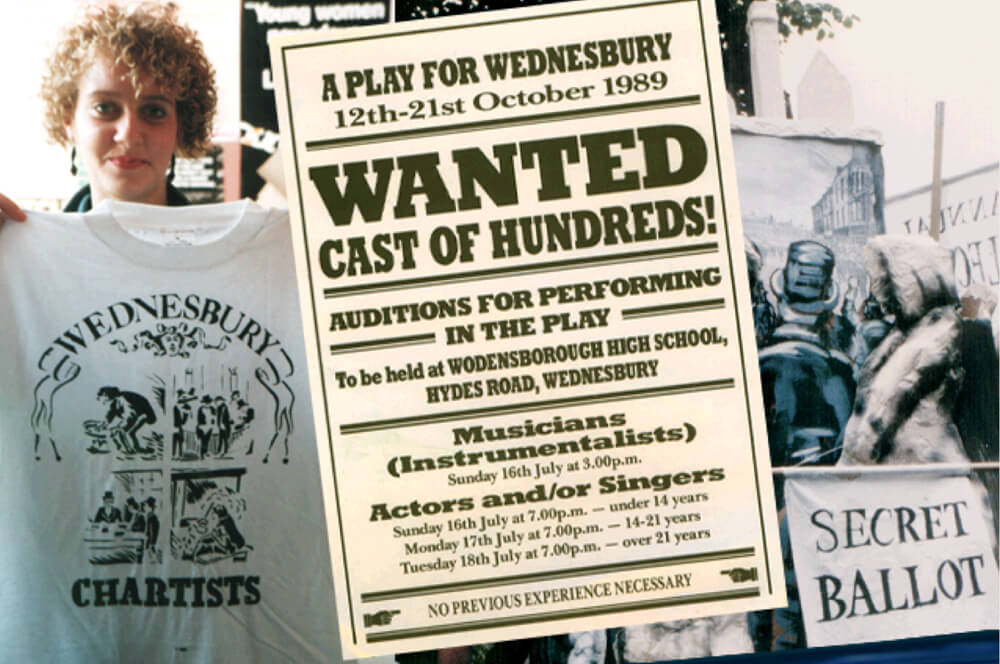
(All the youth together)
So we’re succeeding in our quest
to make Wednesbury our town the best,
If you want the same, a real good starter,
is get yourselves together a CHARTER,
a list of all the things you’d like to see,
just like we’ve done in Wed-nes-bury.
– from The Charter Rap
To transform Wodensborough School Hall, seventy five volunteers painted 2,565 square feet of canvas. They helped turn forty five sheets of ply into the required building, trees and factory chimneys. One hundred litres of paint were applied. Sixty sheets of hardboard were taped to the floor and textured. Sixty lighting lanterns were cabled and hung, colour cut, power supplies connected and plotsheets drawn up. And then there were the costumes! Sewing machines ran late into the night. Hats were made from cardboard and old lampshades, hundreds of buttons were sowed by hand. Boots and shoes were hunted down from second hand shops and market stalls. A team of scroungers borrowed and found live animals, beer, furniture, forge and factory equipment, glasses, tankards, buckets and the countless ‘properties’ seen in the show. As local people used to keep chickens and pigs in their back yards in those days, these animals were recruited from a local farm. However, the health and safety officer from the council vetoed the pig at the last moment, a story picked up by ‘The Sunday People’ newspaper.
Rehearsals began at Wodensborough in September, four evenings a week and at weekends. Tony Stanley worked with pupils and teachers at Manor Youth Centre to produce a series of original posters and leaflets and t-shirts. Performances were scheduled for 12th – 21st October, with a public dress rehearsal before opening night. There were over 50 speaking parts for the actors and thirty eight musicians, with 5 vocal soloists.
The music was provided by three groups, a core band made up of young people from local schools who played throughout the performance, the Wood Green School Band who played at key dramatic moments, and a street band of younger instrumentalists who played onstage as part of the action itself.
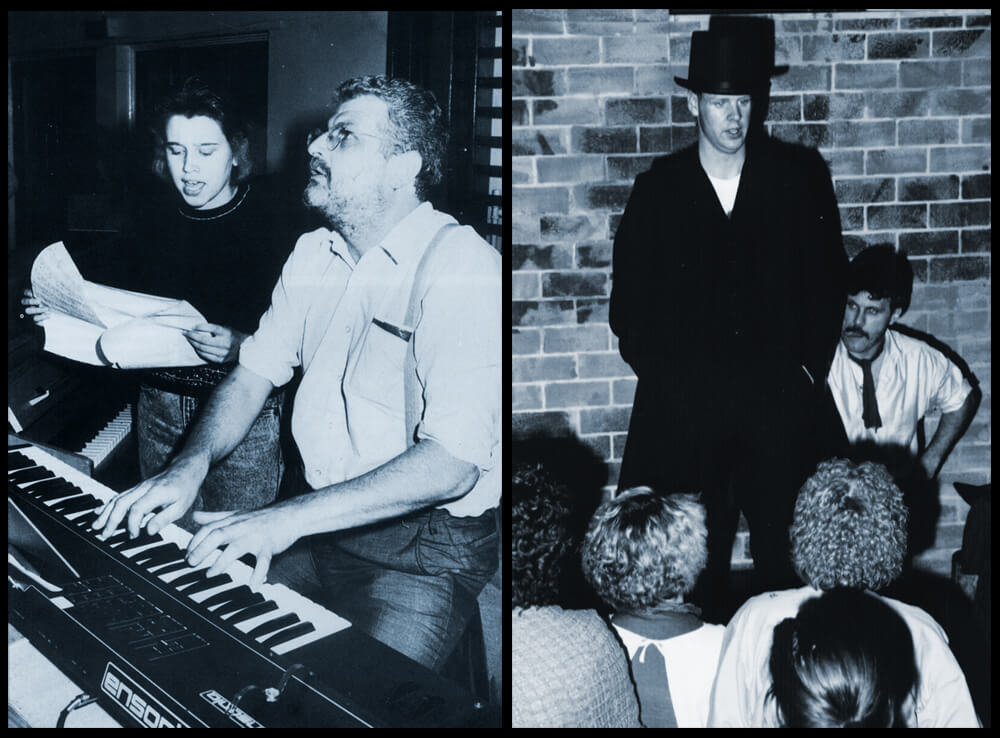
“As I started writing the tunes for this play I realised the music I was composing was sounding very ‘English’. When John Megginson and I started to choose the harmonies and modulations, they seemed to be direct descendents of Elgar, Holst, Parry and Vaughn Williams. The popular perception of music from this period of English music is that it was in the hands of an elite class. I knew however that the emotions being expressed through this specifically English ‘sound’ belonged to the ordinary working people. I hope we reclaimed some of this sense of celebration to mark the endeavour of people in Wednesbury 150 years ago as well as their endeavours today.”
Simon Lanzon, Musical Director
“The kids think their Dad’s gone mad. They said to me, Mum, is he alright? Cos he comes in from work and goes straight upstairs, then we hear him pacing up and down and talking to himself in a loud voice…”
-comment from participants wife.
“You’ve done well to get so many men. When I tell my mates I’m in a play they just want to go back to talking about the latest football score.”
– participant comment
Historical Background to the Play
• As a local sport, the last bull baiting in Wednesbury was in 1848. Isaac Clarkson, the vicar, told a public enquiry: “Once, while I was burying a corpse, there were three bulls at once being baited close to the churchyard”.
• There are documentary reports of the custom of wives being sold in Wednesbury market place well into the 19th century.
• You can still see the original foundation stone of the People’s Hall in Russell Street, Wednesbury.
• Ben Danks, Ralph Longmore, Maria Danks, Hannah Danks and most of the characters in the play were real Wednesbury people in the 1840’s. Their names and ages were preserved in the census returns in Wednesbury Library.
• In any campaign there are both militant and moderate supporters of the cause. In the time period of the play, Fergus O’Connor was the leading militant Chartist. He was an atheist who wanted nothing to do with the Church’s brand of Chartism; he swayed the crowds with inflammatory speeches urging the people to rebel. William Lovett led a much less militant faction, one that most (but not all) people in Wednesbury supported. He believed in combining Chartism with education to enable working people to improve their position.
• It is true that a ‘Lord’ John Russell was landlord of the Turk’s Head at the time. The best known coaching Inn in Wednesbury, it was considered the best place for gossip as well as for beer. There is still a Turk’s Head public house in Wednesbury town centre.
• The ‘Patent Shaft’ was named after the invention of James Hardy, Minister of the Independent Chapel on Holyhead Road. He saw that an axle was best made up of a group of bars, rather than one. He patented his design in 1834 and the Patent Shaft (and Axletree Works) began in 1840, and much of this industry lasted until the deep economic recession of the 1970’s.
• Gas tubes were extensively made in Wednesbury. In the play the lead protagonists are in this business.
• A Tommy Shop was a shop where the mine or factory owners sold goods to their own workers, sometimes in exchange for tokens (which the workers received as part or all of their wage). Sometimes the goods were cheap and sound – but often they weren’t!
• The Chartist newspaper, called ‘The Northern Star’, was in sale in Wednesbury before there was any local paper published.
• The six points of Chartism were:
– the vote for all men
– equal sized constituencies
– a salary for Members of Parliament
– no property qualifications to be a Member of Parliament
– secret ballots
– annual elections.
Many more people signed the Charter in support of these six points than had the vote at this time, but the government of the day ignored their demands.
• In 1884, the Reform Act added 2 million to the electorate, with one in three people having the vote.
• In 1918, The Representation of the People Act gave the vote to all males over 21 and the vote to women of 30 and over who were householders or the wives of householders.
• In 1928, Parliament finally gave the vote to women.
